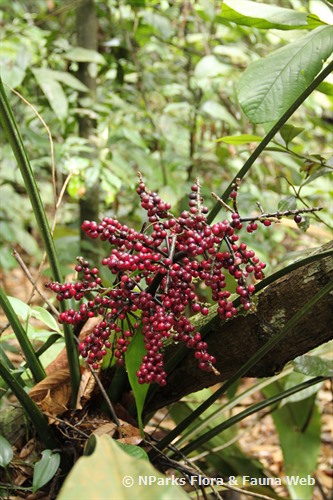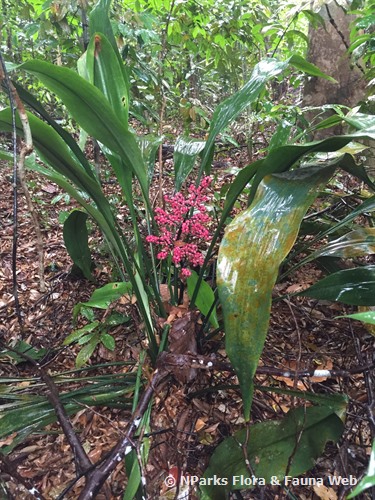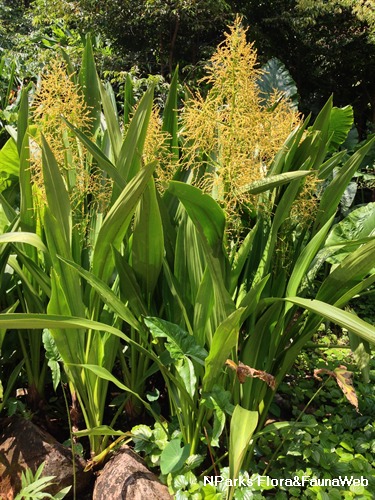
Name
Classifications and Characteristics
| Plant Division | Angiosperms (Flowering Seed Plants) (Monocotyledon) |
|---|---|
| Plant Growth Form | Herbaceous Plant |
| Lifespan (in Singapore) | Perennial |
Biogeography
| Native Distribution | Singapore |
|---|---|
| Native Habitat | Terrestrial |
| Preferred Climate Zone | Tropical |
| Local Conservation Status | Native to Singapore (Critically Endangered (CR)) |
Description and Ethnobotany
| Growth Form | It is a herbaceous plant which grows about 1.5 tall. |
|---|---|
| Foliage | Leaves grow up to 165 cm tall. The leaf blade is narrowly elliptic with attenuate base and elongated tip (65-95 cm long). |
| Fruit | The fruit are 0.9-1 cm in diameter, borne on erect fruiting stalk up to 50 cm tall. The fruit ripen from bright green through creamy-white to dark pink-red or ruby-red and the pulp exudes yellow juice when disturbed. |
| Habitat | It grows in primary or partially disturbed primary lowland forest on slopes or near small/ seasonal streams. |
| Etymology | The specific epithet 'rubinea' is derived from the ruby-red color of the ripe fruit. |
Landscaping Features
| Desirable Plant Features | Ornamental Fruits |
|---|---|
| Landscape Uses | Parks & Gardens |
Plant Care and Propagation
| Light Preference | Semi-Shade |
|---|---|
| Water Preference | Moderate Water |
| Rootzone Tolerance | Moist Soils |
| Propagation Method | Seed |
Foliar
| Mature Foliage Colour(s) | Green |
|---|---|
| Mature Foliage Texture(s) | Leathery |
Floral (Angiosperm)
| Flower Grouping | Cluster / Inflorescence |
|---|
Fruit, Seed and Spore
| Mature Fruit Colour(s) | Red |
|---|---|
| Seed Quantity Per Fruit | Few (1-5) |
References
| References | J. Leong-Škorničková & P.C. Boyce. 2015. Hanguana in Singapore demystified: an overview with description of three new species and a new record. Gardens’ Bulletin Singapore. 67. 1. 1-28 |
|---|
Image Repository
Others
| Master ID | 32826 |
|---|---|
| Species ID | 7239 |
| Flora Disclaimer | The information in this website has been compiled from reliable sources, such as reference works on medicinal plants. It is not a substitute for medical advice or treatment and NParks does not purport to provide any medical advice. Readers should always consult his/her physician before using or consuming a plant for medicinal purposes. |



